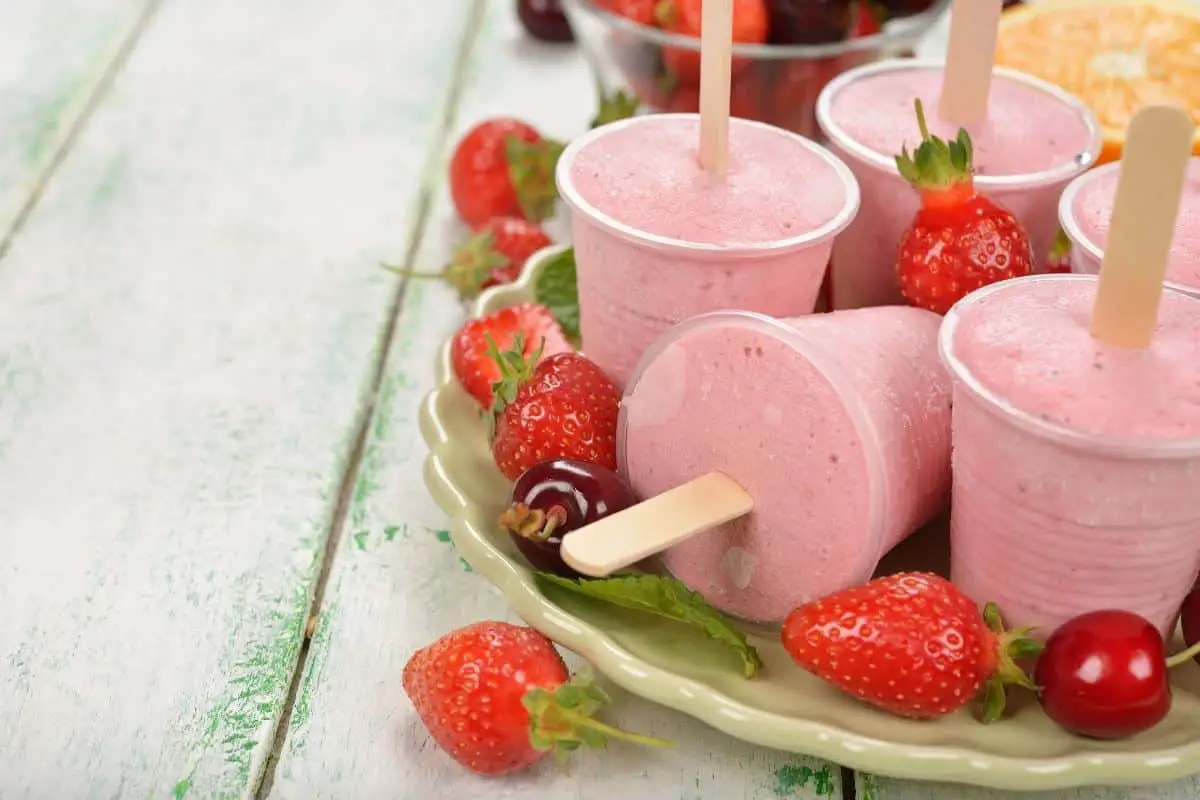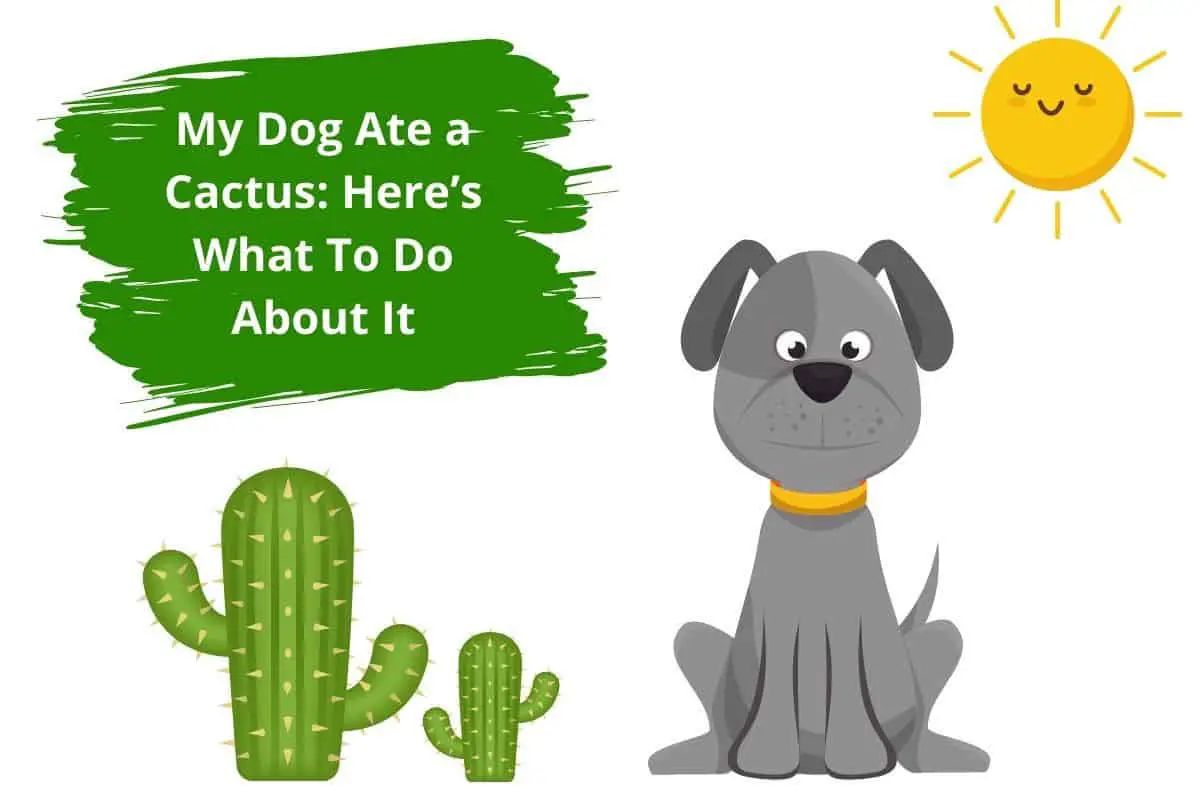This post contains affiliate links.
For dog owners, a major consideration during the hot summer months is what cold treats we can feed our dogs to cool them off. Frozen yogurt is a big favorite among humans, so it follows that dogs may love it too. But considering that not all human foods are safe for dogs, is it okay to feed your pup frozen yogurt?
Dogs can eat frozen yogurt. However, because commercial frozen yogurts are often full of sugar, a healthier option is to freeze your own fat-free yogurt and serve that as a dog treat. Other healthy frozen treats are ‘nice cream,’ a blended frozen banana treat, and frozen peanut butter.
In this article, I’ll be covering whether dogs can eat frozen yogurt, plus a whole other host of foods that is and isn’t safe to feed our four-legged friends. Read on to stay informed on what treats you can feed your pal!
Table of Contents
Is It Okay to Give Your Dog Frozen Yogurt?
Generally speaking, dogs can eat frozen yogurt, but there are some caveats to keep in mind before feeding it to them. According to the American Kennel Club, most dogs tolerate frozen yogurt well, but it’s best to avoid commercial brands that are loaded with sugar that may pose health risks.
It’s also worth noting that some dogs simply don’t process lactose very well and may suffer from gas, stomach pain, and diarrhea.
The main risk of high sugar content in commercial froyo is that dogs suffer from dental decay as a result of the excess sugar—just like us! While you probably don’t feed your dog candy on the regular, it’s best to just avoid any kind of excessive sugar intake.
Instead, freeze your own fat-free yogurt and feed that to your pup. The resulting homemade froyo contains less lactose than commercial formulations and should be well tolerated by most dogs.
Just in case you don’t know how your dog reacts to lactose, observe them for a time after feeding the treat. If you spot signs of gas, bloating, or diarrhea, it may be best to find other treats for your dog.
Generally, yogurt is good for dogs for the same reasons it’s good for humans; it contains live cultures and probiotics that aid digestive health.
What To Not Feed Your Dog
Before we can get into what frozen treats are safe for your pup, it’s best to first cover what to not give your dog. Certain foods are toxic to dogs to various degrees, some causing discomfort and others potentially having much worse health risks. Obviously, we want to avoid that, so what foods should you keep away from your dog?
Chocolate
Most people are aware that chocolate is toxic to dogs, even in small doses, but do you know why?
The cocoa in chocolate contains theobromine and caffeine that humans are well-equipped to digest, but dogs are not. When dogs eat chocolate, it’s called ‘chocolate poisoning.’
The risk to a dog’s health from chocolate depends mainly on how ‘dark’ the chocolate is—how much cocoa is in it—and the bodyweight of the dog. For example, a Great Dane eating a very small piece of milk chocolate isn’t as bad as a Pug eating a whole dark chocolate bar. In the latter case, the dog is most likely going to get very, very sick.
If you didn’t see a dog eat the chocolate, you can determine the severity of the case by how severe their symptoms are. Within 2-24 hours of a dog eating chocolate, they’ll exhibit some to all of the following symptoms. If you notice any of these in your dog, call your vet ASAP.
Here are the symptoms of chocolate poisonings in dogs:
- Vomiting
- Diarrhea
- Fever
- Hyperventilation
- Seizures
- Accelerated heart rate
The best way to keep dogs from getting sick from chocolate in the first place is to keep chocolate in your home in cabinets or other places your dogs can’t reach.
Macadamia Nuts
It’s not as widely known as chocolate, but macadamia nuts commonly used in baking or found in baked goods are very toxic to dogs. Unlike chocolate, however, scientists still aren’t sure why macadamia nuts are dangerous for dogs.
Symptoms of macadamia nut poisoning are easily distinguished from other toxic food symptoms like chocolate. If you spot these symptoms in your pup, immediately call your vet.
Here are the symptoms of macadamia nut poisoning in dogs:
- Weakness in the legs, especially in the back legs
- Vomiting
- Diarrhea
- Tremors
- Fever
Onions, Garlic, and Chives
All of these veggies are in the Allium family and not safe for dogs (or cats!) to eat at all. If it’s relevant to you, leeks, shallots, and scallions are also in this category.
What happens when dogs munch on these veggies is that their red blood cells become poisoned and die. This can, of course, be catastrophic if the dog eats a large or even a moderate amount daily. It’s worth noting that garlic is 5 times as toxic to dogs as onion is.
What makes this toxicity so insidious is that symptoms may not show up for days after the dog eats any of these, and the symptoms may not be apparent except in severe cases. Mild cases can present with only some fatigue or lethargy, but more severe cases have many symptoms.
Here are the symptoms of onion, garlic, and chives toxicity in dogs:
- Bad breath
- Excessive drooling
- Weakness and lethargy
- Red discoloration of their urine
- Vomiting
- Diarrhea
- Ataxia (bad motor coordination)
- Pale gums
If you notice any of these symptoms in your dog, immediately call your vet and ask for instructions. For best preventing this, keep all onion, garlic, chives, leeks, shallots, and scallions well away from where your dog can get into them.
Frozen Treats Safe for Your Dog To Eat
I know I enjoy a cold treat on a blazing summer day, and chances are that you do too. Why would your dog’s appreciation be any different?
Well, because they can’t eat all the things we do. Fortunately for us, though, there are a lot of common foods that humans and dogs can love together in frozen form.
‘Nice’ Cream
Nice Cream is a popular frozen treat made of bananas. Dogs absolutely love Nice Cream and it’s one of the best frozen treats you can give them—plus it’s healthy! For the purposes of this section, however, we’ll throw in a couple of other ingredients to make things interesting for your furry friend.
Here are the other ingredients you may add to your dog’s treat:
- Bananas
- Peanut butter
- Coconut milk
Below are the steps on how to make your own Nice Cream:
- Throw the ingredients into a blender or food processor until it’s a slurry.
- Put the blended ingredients in the freezer and wait until it’s frozen.
- Serve at any time, but especially in the middle of a hot summer’s day!
Frozen Kong
If you’re not familiar with Kongs as a dog owner, do I have a treat for you – and your dog, of course!
A Kong Toy is a uniquely shaped rubber toy that you can put food inside. This food may or may not be frozen as desired, but the point is that dogs will go crazy trying to figure out how to get at the food stuffed inside. Kongs are perfect for mentally stimulating and occupying bored and hyper pups.
Some common recommendations for filling a frozen Kong are peanut butter and sliced bananas, but anything edible for dogs is fair game. How about a mixture of cream cheese with sliced steak or chicken?
Dog treats and kibble alike can be used in frozen Kongs to fill out the volume of food used, but your furry pal will treasure every frozen Kong that comes his way when it’s blazing hot outside.
Ben & Jerry’s Doggie Desserts
The famous ice cream maker has developed two flavors of what they’ve dubbed ‘doggie desserts.’ In lieu of cream or milk to give it a creamy flavor, though, they’ve substituted sunflower butter. These are awesome if you feel guilty about getting ice cream when it’s especially hot out, and you know your pup can’t have any.
Rather, treat your furry friend to Rosie’s Batch, the flavor with pumpkin and mini cookies, or Pontch’s Mix, peanut butter swirls with pretzels. Both of these flavors were specifically formulated with dogs in mind, but Ben & Jerry’s says they’re perfectly fine to try for yourself – as long as you enjoy sunflower butter!
What Other Treats Are Good for Dogs?
While frozen treats are great for a sweltering summer day, you can’t only rely on cold snacks to satisfy your pup. You should regularly feed your dog healthy snacks they’ll not only love but that will provide them health benefits.
Carrots
Carrots are one of the best snacks to feed dogs because they’re basically versatile doggy toothbrushes; chewing on carrots is an efficient way for dogs to keep their teeth clean of all the random junk that builds up in their teeth.
Carrots can be served cooked or raw, but I suggest slicing and boiling them for a few minutes before serving alongside or mixed in their meal. You should slice your carrots because slices provide much less risk of choking for hasty dogs.
Apples
Apples are another great natural treat for dogs—who knew they liked so much fruit?!
Just like carrots, apples are a tasty natural way for dogs to clean their teeth and have a snack at the same time. Unlike carrots, though, apples require no prior cooking.
Apples should be sliced and de-cored before serving – apple seeds contain small amounts of toxic cyanide that can be harmful to your dog and other animals that may find them.
Pumpkin
Pumpkin is a very healthy treat for dogs, but should be served in moderation because of its high fiber content. Both seeds and pulp are okay to feed, though I’d recommend no more than a tablespoon or two of plain canned pumpkin mixed with your dog’s food. Pumpkin is a good natural remedy for dogs that suffer from constipation and diarrhea alike.
Watermelon
Watermelon is a fairly well-known natural dog treat that your dog will love—if given in moderation. Dogs can’t tolerate the rind of watermelon, so make sure you only give them the pink flesh that you eat too. Served regularly in moderate amounts, watermelon is known to boost immune health in dogs and humans alike.
Final Thoughts
While frozen yogurt is fine if made yourself, commercial formulas are loaded with too much sugar that isn’t good for your dog. Consider setting your pup up with a frozen Kong toy or some ‘nice’ cream, but always be aware of the foods toxic to dogs!
Related Articles
- Can Dogs Eat Ginger Snaps: Yay or Nay?
- Tapioca for Dogs: Should It Be Part of Your Dog’s Diet?
- Can Dogs Eat Banana Bread? We Ask the Experts!
- Can Dogs Eat Pork Rib Bones? (Is It Safe?)
- Can Dogs Eat Tuna? (We Find Out)
Sources
- American Kennel Club: Can Dogs Eat Ice Cream?
- University of California Davis Veterinary Medicine: Chocolate Poisoning in Dogs
- American Kennel Club: Can Dogs Eat Macadamia Nuts?
- VCA Hospitals: Onion, Garlic, Chive, and Leek Toxicity in Dogs
Mrdogfood.com is a participant in the Amazon Services LLC Associates Program, an affiliate advertising program designed to provide a means for sites to earn advertising fees by advertising and linking to Amazon.com. We also participate in other affiliate programs which compensate us for referring traffic.





